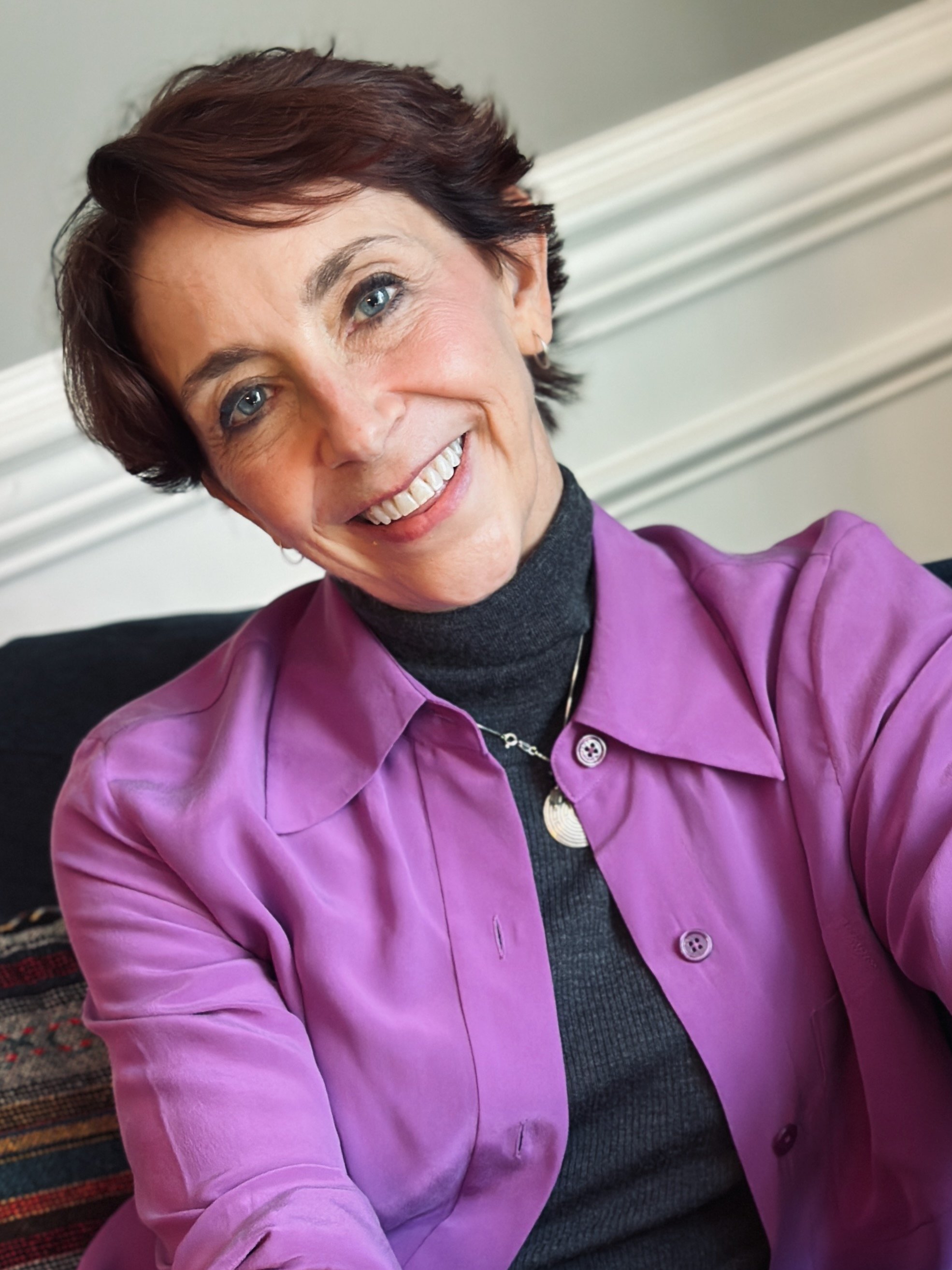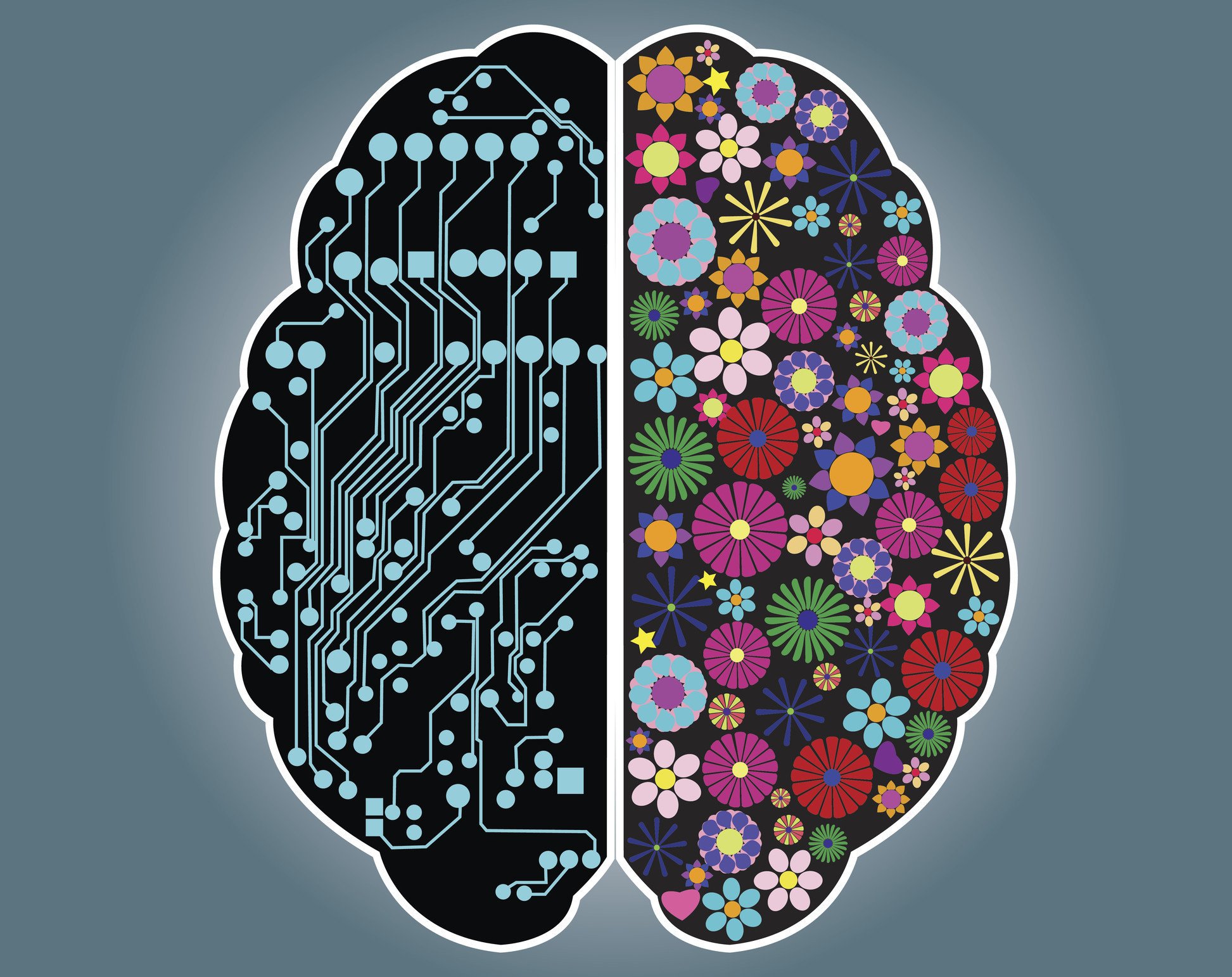Swap Anxiety for Joy
Today, I’m happy to share an article I wrote for Spirituality & Health magazine about Martha Beck’s transformative new book, “Beyond Anxiety.” I’ve done my best to capture its most profound insights in this piece. If you’re curious about finding freedom from anxiety by embracing creativity and curiosity, learning about the part of your brain that is incapable of experiencing anxiety, or discovering effective ways to calm your nervous system, I invite you to read on!
There’s some good news for those of us who struggle with anxiety and are eager to live with more joy and less fear: Martha Beck has figured out how to break free from the torturous grip of anxiety, and she’s helping others do the same.
Beck—a Harvard-trained sociologist, world-renowned life coach, and best-selling author—has devoted her life to cracking the code on anxiety, one of her biggest struggles since childhood. “Luckily,” Beck writes about her younger years, “inactivity made me just as anxious as everything else. So I charged forward into life, not so much bravely as frenetically, like someone running from a swarm of bees.”
In her wisdom-packed new book, Beyond Anxiety: Curiosity, Creativity, and Finding Your Life’s Purpose, Beck teaches how to replace the excruciating “anxiety spiral” with the exhilarating “creativity spiral.”
Martha Beck
Brain Basics
Beck’s anxiety-busting strategies rely on understanding two things about the human brain. First, just like every mammal, we have an ancient part of our brain—our amygdala—that manages many of the emotions essential to our survival, especially fear. Second, our brains have two hemispheres, a left and a right, and each has a very different way of processing information and experiencing the world.
Beck explains that anxious thoughts are generated by our brain’s left hemisphere—the verbal, logical, and analytical part of our brain that thinks linearly and logically, accumulates facts, and passes judgment. In contrast, our right hemisphere—the creative, non-linear, intuitive part of our brain—experiences life in the present moment. Instead of bringing the past forward or fretting about what might happen, it stays attuned to immediate emotions and sensory input. This means that the right brain does not experience anxiety, because anxiety is always future-focused.
For most animals, the experience of fear ends when they are no longer in danger. But the human brain’s ability to hold information as a verbal story and elaborate on it with imagination enables us to generate scary scenarios that can keep our fear response elevated indefinitely. “And here’s a key point,” Beck writes. “The thoughts remembered and imagined by the neocortex feed back to the left amygdala as if they are actually happening.”
Commiserating with people who are well-acquainted with anxiety spirals, Beck writes, “You know how it feels to lie awake, safe and sound, getting more and more terrified—not by actual events but by possible ones … jolts of intense alarm followed by terrifying thoughts about potential disaster followed immediately by even more intense jolts of alarm.”
The Anxiety Spiral Versus the Creativity Spiral
Beck believes that much of our anxiety stems from how much our culture prioritizes left brain functions over those of the right brain. She writes: “From early childhood, you have been constantly rewarded for thinking in a certain way: verbally, analytically, in organized lines of logic … In school, you were carefully taught to repress your creative genius by working through every subject in a logical, linear way … You had to follow consistent procedures, and they had to be the same procedures as everyone else.”
According to Beck, living in a left brain-dominated culture not only breeds anxiety, it reduces the right brain’s ability to perceive context, connection, and beauty. “Where the left side analyzes (the word analyze means ‘to cut things apart’), the right side synthesizes, or puts things together. Working with the raw material of whatever we perceive in the present moment, the right brain harmonizes, blends, relates, and assembles things, often in highly original ways.”
When we learn to calm our anxiety and access both sides of our brain, we can activate what Beck calls the “creativity spiral,” which is the mirror image of the anxiety spiral. “Where the brain’s left-side spiral sparks fear and makes us want to control things, its right-side spiral sparks curiosity and makes us want to create things.”
Beck’s roadmap to swapping anxiety for joy is based on the fact that these two opposite spirals can never be activated simultaneously. When one turns on, the other shuts off.
“Anxiety shuts down creativity so completely that even the slight stress of being told we’ll get paid for solving a puzzle makes us less able to think creatively,” Beck writes. “But by the same token, deliberately entering and moving further into the creativity spiral pulls us out of the anxiety spiral … It can take us on a wild, delicious joyride that leaves anxiety so far in the rearview mirror we can barely remember it.”
Fostering Calm
Because anxiety shuts down creativity, the ability to calm ourselves is a prerequisite to fully activating our creativity spiral. Beck explains that the most effective approach to soothing anxiety is acceptance and kindness. She bemoans how often people try to “attack” anxiety, “fighting it like warriors on a search-and-destroy mission”—an orientation that only reinforces the left brain’s tendency to compete, battle, and conquer.
Beck shares six “amygdala-whispering” techniques (summarized below), which are akin to “horse whispering”—methods based on building trust and connection, as opposed to “horse breaking,” which relies on force and control.
Martha Beck’s “Amygdala-Whispering” Techniques
Sigh. Exhale deep breaths with long sighs. “Every time you breathe out, your heartbeat slows a little. Exhaling taps the brakes on your fight-or-flight response.”
Soften the focus of your eyes. Because maintaining a sharp focus is part of the fight-or- flight-response, “Softening the focus of our attention, especially the focus of our eyes, sends a powerful message to our anxiety creatures that it’s okay to relax.”
Move. Staying still when you’re feeling anxious can feel akin to captivity. “Movement, especially shaking, is a highly effective way to handle current or post-traumatic stress … a powerful way for the nervous system to regulate into a state of peace.”
Accept. Trying to stop yourself from feeling your emotions fuels anxiety, while acceptance breeds calm. Try telling your anxious parts, You can go ahead and stay scared. I’m not going to try to change you. I accept you exactly as you are.
Murmur, hum, sing, or chant. Our amygdala is reassured by sound and vibration. “When we’re anxious, our throats tighten. Our voices go up in pitch as well as volume. Relaxing our breathing muscles by speaking in a low, slow voice is soothing both because it requires us to loosen this tension, and because the physical vibration of a calm human voice helps regulate our nervous systems.”
Deploy kind internal self-talk (KIST). Use a gentle voice while focusing on extending loving-kindness to yourself as if you are addressing another being. Experiment with comforting phrases such as, “You’re okay,” “I’m here with you,” “May you feel peaceful,” and “May you feel free.”
Turn Right Toward Curiosity
Beck views curiosity as the secret doorway between the fearful and inventive sides of our brain and explains that there are two very different types: deprivation curiosity and interest curiosity. The first stems from a worried need to accumulate enough information to feel safe, while the second stems from an enthusiastic desire to explore.
“Where anxiety makes us avoid more and more of the world, curiosity draws us forward, helping us get used to unexplored environments and unfamiliar experiences,” Beck writes. “Anxiety retracts; curiosity expands.”
Confident that our innate curiosity is always eagerly waiting to be reactivated, Beck writes, “Once you begin turning on your interest curiosity, opening the secret doorway between worry and wonder over and over, you’ll find that the door starts to work more smoothly.”
As we reawaken our childlike curiosity, Beck says we will begin to feel more playful and filled with wonderment.
Activating the Creativity Spiral
Throughout Beyond Anxiety, Beck offers many practical strategies to activate curiosity and creativity. She urges people to drop their externally conditioned ideas about what should interest them and begin to pay close attention to what actually sparks their delight.
Beck has coached people whose creativity spirals were activated by all sorts of activities, including raising chickens, making variations on spaghetti sauce, photographing insects, and carving soap. “Your interests may seem quite normal or completely bizarre to the people around you,” writes Beck. “What matters is that they stimulate your curiosity and make you want to keep playing with them.”
Diving headlong into what interests us often allows us to experience the delightful state of “flow.” Beck says this is what happens when time disappears and we join with the “energy of pure creation.” Not only do flow states flood us with delicious-feeling hormones, they enable us to bless the world with our best, most creative ideas.
Beck emphasizes, however, that even our most passionate creative pursuits won’t always feel easy—and they shouldn’t. Embracing “getting stuck” is an essential part of the creative process. Beck writes that getting stuck is our clue to take a break, appreciate the open and receptive state of not knowing, and then re-engage when our minds are clear and rested.
Free Yourself, Heal the World
The benefits of swapping anxiety for creativity are far-reaching. “Anxiety is contagious,” Beck explains. “As society makes us anxious, we make it anxious. Our uneasy feelings, thoughts, and actions bleed into the world around us, making others more anxious still.” Anxiety also reinforces suspicion and prejudice, which can lead us to “embody the very attitudes we don’t want to see in the world.”
Creativity spirals, on the other hand, are what Beck calls “love in action.” They open our minds and hearts, impelling us to learn about different people and perspectives. “Anxiety spirals show us only half the world. Creativity spirals show us all of it.”
Beck wants those on an anxiety-healing journey to understand that the logic of anxiety is always self-defeating, because it makes us believe that the only way to be safe is to never feel safe.
“Anxiety always lies. Always,” writes Beck. “Remember, healthy fear is the truth: a clear impulse to act when, for example, there’s a leopard in your bedroom. Anxiety is only a thought: the fear of leopards when no leopards are present. You’ll always have your healthy fear. It can save your life; anxiety can only ruin it.”
For Beck, turning toward curiosity and creativity is what finally enabled her to extricate herself from the relentless grip of anxiety. She is certain that the more you activate your own creativity spiral, the more “you’ll start to experience that incredible, beneficent magic: a sense of the world reaching back toward you from all around, as if the vast intelligence of nature is exploring you.”







